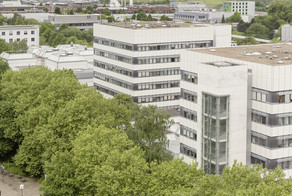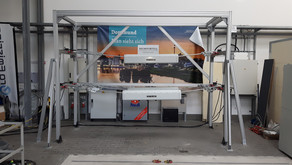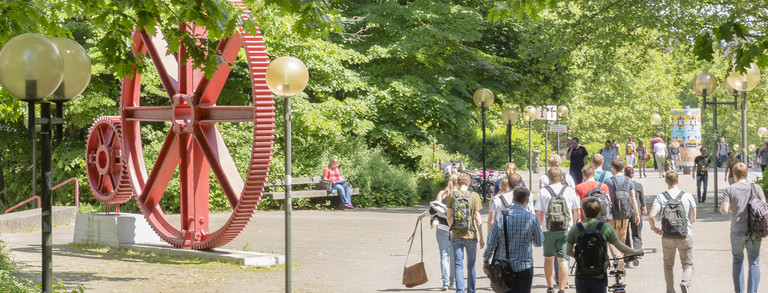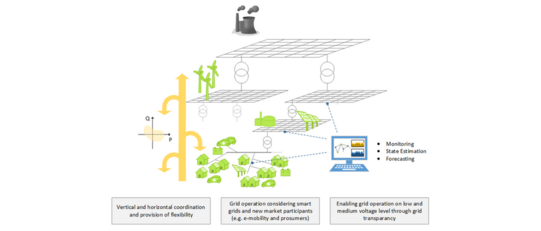Operation of flexible distribution grids
A major research field within this research group addresses the operational planning and management of active and flexible distribution grids. For the integration of decentralized energy resources and new consumers on distribution grid level, the existing grid infrastructure and its transfer capacity is not appropriate for current and future grid utilization. The aim of the operational planning and management strategies for distribution grids is therefore to use the existing grid infrastructure more flexible and efficiently and where reasonable avoid additional grid expansion.
The basis for operational planning and management strategies is the estimation of the current or future grid state. In most medium and low-voltage grids there is only a small number of nodes with are equipped with measurement devices. Therefore, algorithms for the placement of additional measuring points and the incorporation of further data sources for the estimation of the system state are investigated. In the next step the transferability of methods for state estimation to the distribution grid are tested and the applicability of new algorithms for state estimation is analyzed. Uncertainties due to measurement and pseudo measurement data are taken into account and finally their effects on the system state accuracy are examined.
With monitoring or forecasting information about the grid state, the medium and low voltage grids can be utilized more efficiently and grid congestions and voltage range problems can be solved in a targeted manner. In addition, algorithms for the aggregation and dispatch of active and reactive power feed-in of flexible feeders, consumers and storage devices are developed. This flexible power can be used, for example, to eliminate grid congestions in overlaid grid levels and to provide ancillary services.
Finally, concepts for the integration of flexible power from the distribution grids into electricity markets are being developed. For this purpose, the roles of the individual participants in the energy system are first defined and a suitable market design is developed. Based on this, operative measures for the use of flexible power in grid operation management are derived and recommendations for action are given to the individual market participants.






